
Newsletter of the Shell Club of Sydney
NSW Branch, The Malacological Society of Australasia Limited ACN 067 894 848
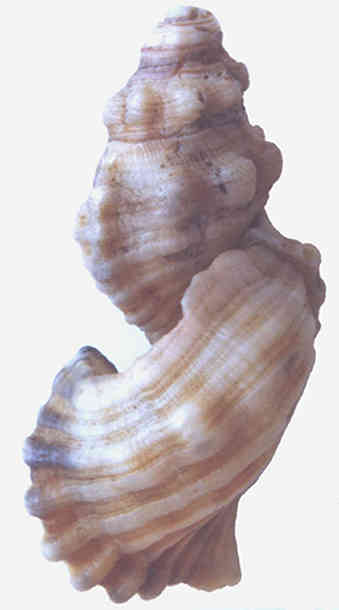
Cabestana stretch-limo-us
Courtesy Angus Hawke
The Universal Shell Trading Company
Bob & Rosemary look forward to your correspondence.
http://www.univershell.com/home.html
webmaster@univershell.com
This is a web site that sells shells. It grades each specimen of each species, and in many cases has photos.
Chances are that somewhere in the 500,000 shells they have at least one of what you need!
The site has been upgraded as follows:
1.] Added several hundred specimens to the web site. Lots of cowries, cones, spindles, wentletraps, scallops, conchs, and of course murex!
2.] Completely redesigned & rebuilt the site to be faster and easier to navigate.
3.] Added Credit Card processing via i-escrow [used by ebay and others]
4.] Created and posted reusable self-running digital catalogues. These applications allow you to have a full listing of the shells on your hard drive. They are refillable with a simple download. The file sizes are pretty large for download [2.5 Mb], but you only download the application once. The refill files are much smaller [100K]. This way you stay up to date with the inventory.
5.] The inventory is also posted in Adobe Acrobat form.
6.] Finishing up the collecting databases and expect them to be available for beta testing in late April.
Shells for sale are grouped into
Land Snails
Marine Gastropods
Marine Bivalves
Fossils
Special Collections
An example of a land snail item for sale is as follows:
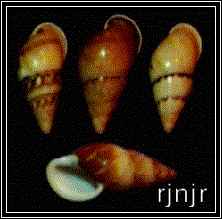
Chrysallis virgata
Not all specimens have pictures, but all pictures seem to be in colour.
Each specimen is then listed with its details and price, eg:
98-251 Chrysallis (Dolichostyla) virgata form: partuloides 45 mm FINE $2
Comments: collected 1988. dark colored with spiral bands
98-249 Chrysallis (Dolichostyla) virgata form: partuloides 50 mm FINE $3
Comments: collected 1988. Medium dark colored with frosty markings
98-244 Chrysallis (Dolichostyla) virgata form: partuloides 48 mm FINE $2
Comments: collected 1988. Light colored with spiral bands
98-241 Chrysallis (Dolichostyla) virgata form: partuloides 35 mm FINE $2
Comments: collected 1988. Light colored.
An example of a Marine Bivalve follows:
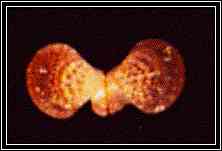
Chlamys sentis
Pectenidae 98-652 Chlamys senatoria 28 mm GEM $2
Nice reddish orange color
An example of a marine gastropod item for sale is as follows:
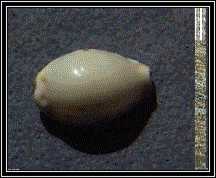
Cypraea Lynx
98-747 Cypraea lynx 36 mm FINE $50
If the identification is right - it's an Albino!!
Unusual NSW Specimens
Angus Hawke
Hello I'm Angus from the ACT
On my birthday in April 1998, I was collecting with my brother when I came across a rare treat. It was a sinstral
Turbo undulatus. At the very time I was talking to my brother about the only sinstral undulatus thought to exist (in the Griffith Collection in Victoria), I saw the shell pictured and picked it up.
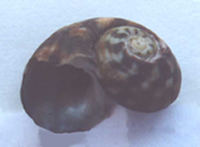
It was hard to believe I had just found it. The shell is fairly small at 20mm length. It was collected at Congo NSW. This picture was my first attempt at photography.
The front cover of this issue features another freak, a Cabestana that my father found, of all places, in a garden at a caravan park in Byron Bay NSW! The last whorl is self-explanatory.
Bishop Museum (the Hawaii State Museum)
Allen Allison Neal Evenhuis
Vice President, Research Chair, Natural Sciences
The Bishop Museum in Hawaii has large collections of Indo-Pacific molluscs, plus collections of the endemic land snails of Hawaii, which are close to extinction.
Friday 26 February the Bishop Museum layed off approximately 20 staff and reduced time for another 12 people
The Bishop Museum is privately funded deriving most of its operating funds through admission fees, contributions, trusts, bequests, grants and contracts.
Because of a stagnant Hawaiian economy, lower-than expected returns on investments, delays in expecting large grants and contracts, and a significant reduction in state subsidy, the Museum has had to implement a
cost-reduction plan.
For the next four months (until the new fiscal year), no collections transactions (accessions, deaccessions, and loans) will be carried out and no access will be provided to collections by researchers and scholars unless specifically funded or obligated through existing grants or contracts. Basic maintenance (care and preservation) of all collections will continue.
In the meantime they are working with state legislature to try to increase state appropriation (during the past few years it has been reduced by more than $2.1 million to $381,000 today).
Many people wrote letters of support last year and this helped retain some state support. If you would again like to write in support of Bishop Museum please send your letters to Dr. Allen Allison, Vice President for Science, Bishop Museum, 1525 Bernice Street, Honolulu, Hawaii 96817. Fax 808-847-8252, e-mail allison@hawaii.edu. Letters will be distributed to key legislators and state officials. Many thanks for your concern and for your support.
Things To Think About:
Last night I played a blank tape at full blast. The mime next door went nuts.
We know about the speed of sound, and the varying colours to make up the speed of light (i.e. blue is different to red - red blue shift) So what's the speed of dark?
Why don't they just make mouse-flavoured cat food?
I just got skylights put in my place. The people who live above me are furious.
Why do they sterilise needles for lethal injections?
Isn't Disney World a people trap run by a mouse?
Whose cruel idea was it for the word "lisp" to have an "s" in it?
Queensland Finds
Kevin Lamprell
Recent collecting in the waters off Halifax Bay, North Queensland has produced many interesting species, both gastropodes and bivalves,
several of which are yet to be described while others are new records from Australia.
However one bivalve in particular got my attention. Recently described from New Caledonia by Dr Aki Matsukuma this is the first record outside the type location of New Caledonia
Eopseuma phyllotrapezium Matsukuma,1996, is a unique member of the Chamidae with leafy-like fonds and delicate sculpture, the particular
specimen in my collection is off-white in colour and 43.3 mm in length. Three views are shown here.
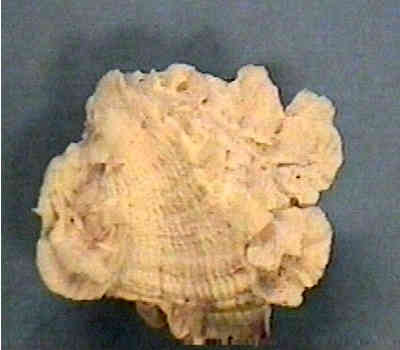
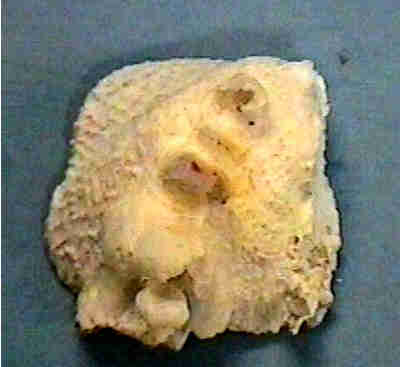
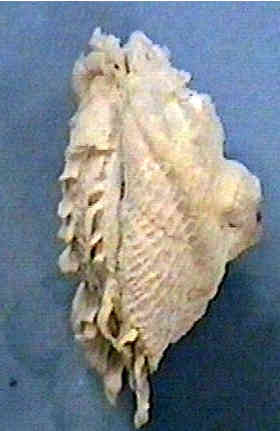
Eopseuma phyllotrapezium
Two gastopods from the same locality are also figured. The one below is the rare
Cymatium comptum
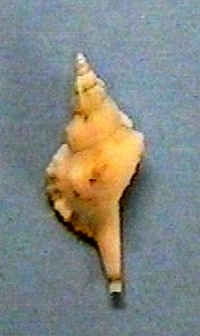
The other, shown in the two photographs below, is an unknown genus possibly Fax. Perhaps some reader may be able to help with the identification?

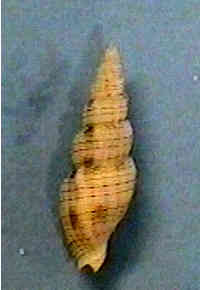
Cultured Pearls from the Abalone,
Haliotis iris Martyn, 1784 from Stewart Island, N.Z.
By Maureen Anderson
Whilst travelling around New Zealand, my husband Noel and myself decided to spend some time on tiny Stewart Island, which is separated from the rest of New Zealand by Foveaux Strait - 32 kilometres from the bottom end of the South Island.
We weren't disappointed. We discovered that on this tiny island they were farming half-cultured pearls from the abalone
Haliotis iris Martyn 1784.
The abalone, however are extremely strong and mobile, ejecting implants almost at will. They are also haemophiliac, which makes handling difficult, so in the past they have been collected in the wild rather than farmed.
They are very excited with their results on producing half round pearls (maybe) which grow on the inside of the shell.
A full round pearl actually grows in the abalone flesh and that is proving much more difficult.
Gemmological Characteristics
a) Rounded to baroque shapes.
b) Multi coloured nacre that is seldom completely smooth.
Cause of Colour.
The distribution of the multi coloured, rainbow like diffraction hues which characterise abalone pearl nacre are determined by a combination of factors including genetics of the particular abalone species, diet (of seaweed) and which wavelengths of incident white light are diffracted by even layering of the shell's nacre. Hues commonly displayed by abalone nacre include a mix of pink, orange, green, blue, lavender, silver and gold.
These cultured pearls are expensive. Being a woman, and liking pretty things, I just had to have one. Mine is set in an 18-carat gold swivel that I wear with pride. How many of us have seen a cultured pearl from the Haliotis iris? They are truly beautiful.
Tiny Stewart Island was one of the highlights of our trip. I even cooked on a fuel stove! Plus it generated heat for room warming in the cottage that we stayed in.

Editor's note. Maureen wore this gem at our last shell meeting
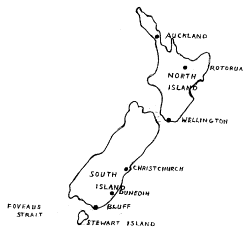
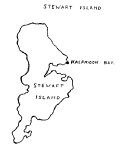
|














